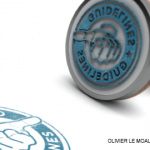
PARIS, FRANCE—The amount of collaboration between the American College of Rheumatology and the European League Against Rheumatism, as well as other international groups, is likely to continue to grow when it comes to creating criteria and response sets, and patient management guidelines, said Kenneth Saag, MD, MSc, professor of medicine at the University of Alabama at Birmingham, a member of the ACR Board of Directors, and a leader in the writing of the ACR’s most recent RA management guidelines.
There are hurdles to overcome, however, not the least of which is the different healthcare systems involved, Dr. Saag said in a session on RA management guidelines throughout the world at the Annual European Congress of Rheumatology (EULAR 2014) in June. His talk also delved into the philosophy behind guideline creation and touched on future additions to ACR guidelines.
As for international cooperation, ACR and EULAR have already collaborated on remission criteria, and they jointly developed classification criteria on polymyalgia rheumatica (PMR), which were presented this year at another EULAR session.
Dr. Saag said the presentation of the PMR guidelines made it a “pivotal meeting” for joint guideline efforts.

“It’s also important to highlight that the joint activity between ACR and EULAR along classification response criteria has been ongoing quite successfully for many years,” he said.
He said he’d like more collaboration not just with EULAR but other large, international organizations, too. But with such factors as “institutional politics,” it can be a “complicated” endeavor.
“Trying to just maintain the flow with EULAR is challenging for both sides—to deal with financial models, to deal with conflict issues, to deal with different healthcare systems,” he said. “And that’s where I think it’s been a little more challenging for guidelines. But it doesn’t mean we can’t do it, and in fact we have momentum. This is a positive sign.”

Early Days
Josef Smolen, MD, chair of the Division of Rheumatology at the Medical University of Vienna, said it was worth remembering that efforts at collaborating are only 10 years old. He said it was 2003 when he suggested that the ACR and EULAR start working together.
“It took a few years to get it off the ground,” he said. “And I find it fantastic that we already have so many common activities. And not only activities, but results.”
He acknowledged the difficulties.
“We in Europe cannot understand that something that [we’ve had for] 120 years is only being debated in the United States,” he said. “So there are these differences in healthcare systems.”
Constant Change
In his remarks about the ACR guidelines, Dr. Saag described a constant state of reexamination—evidence changes or emerges and methods of creating the guidelines change, leading to adaptations that are always attempting to keep pace with the medicine.

